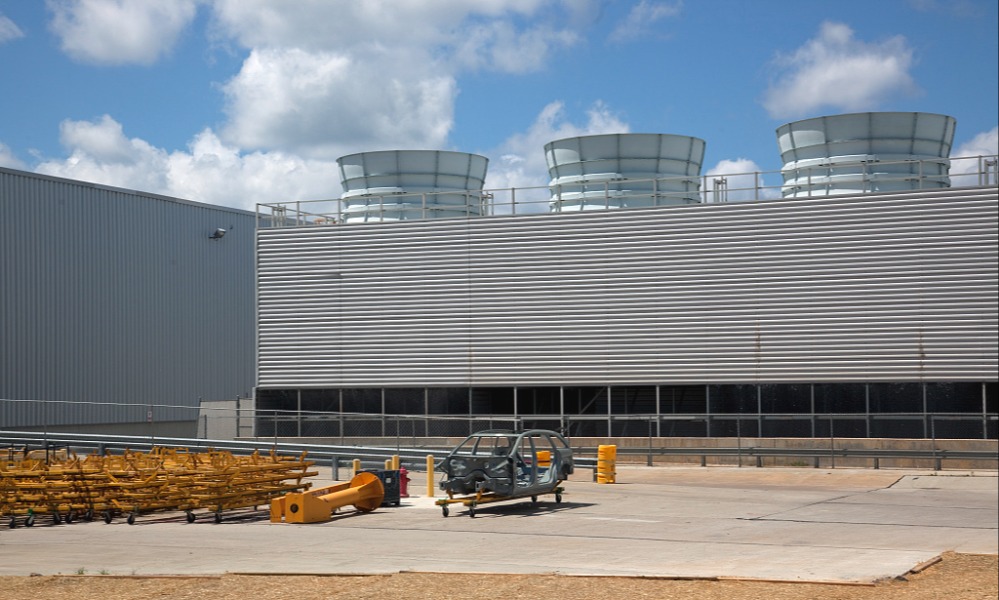Large-Scale Geoengineering and Threats to National Security
In light of the scientific consensus that substantial increases in atmospheric CO2 will inevitably lead to solar-driven global warming, the nations of the world are seeking to obtain agreement on proposals to reduce the amount of CO2 that their economies produce.
Published by The Lawfare Institute
in Cooperation With

In light of the scientific consensus that substantial increases in atmospheric CO2 will inevitably lead to solar-driven global warming, the nations of the world are seeking to obtain agreement on proposals to reduce the amount of CO2 that their economies produce. A variety of reports, both government and nongovernment, have underscored the national security threats associated with climate change. Roughly paraphrasing the aforementioned CFR report, these include the destabilizing effects of storms, droughts, and floods, with the result that these effects could overwhelm disaster-response capabilities, contribute to political violence, and undermine weak governments. The DOD report predicts that climate change will aggravate problems such as poverty, social tensions, environmental degradation, ineffectual leadership and weak political institutions that threaten stability in a number of countries.
However, as anyone who follows climate change knows, binding agreements have been difficult to reach in large part because they would entail substantial short-term cost for benefits that would accrue only in the long term. What will the world do if these efforts to reach meaningful agreements on reducing emissions of CO2 are unsuccessful?
In this eventuality, some observers believe that large-scale geoengineering must remain an option for coping with climate change, at least in part because of the (well-founded) concern that for a variety of reasons, nations may fail to act in time. Thus, they say, the world may inevitably be driven to the point where large-scale geoengineering is the *only* viable option left on the table.
Large-scale geoengineering refers to attempts to modify the planetary system in such a way as to mitigate the effects of global warming. Some proposals increase the amount of sunlight that the earth reflects, thus reducing the energy flux warming the earth – this is generally called SRM, for solar radiation management. Others reduce the amount of carbon dioxide in the atmosphere – CDR, for carbon dioxide reduction. Both SRM and CDR have a scientific basis behind them, and may thus appear to be attractive options.
On the other hand, the uncertainties of large-scale geoengineering are large, and few scientists would predict with any confidence the ultimate outcome of any particular scheme. Put differently and more starkly, most reputable climate scientists are very wary of large-scale geoengineering, and taking any such action might well make the world as a whole much worse off in the long run.
Large-scale geoengineering has security implications as well. An important national security concern—unaddressed in most of the discussions about the national security concerns associated with climate change—arises from the fact that some geoengineering options are relatively inexpensive to implement. For example, one approach to large-scale SRM is to shoot into the sky large quantities of sulfur dioxide that would block some of the sun’s warming rays. An approach to large-scale CDR is to dump iron into the ocean to stimulate algae production that would increase absorption of carbon dioxide.
The fact that some options for SRM and CDR are inexpensive—so much so as to be within the ability of some small nations or perhaps even some very rich individuals—means that one of these actors might be able to undertake such actions unilaterally, in the name of saving all of earth from the worst of climate change. And the possibility (indeed, the likelihood) that something might go wrong with one of these schemes, places the issue of geoengineering squarely into the national security domain.
Just as an illustrative example – not a prediction or a proposal – consider the possibilities raised by a recent MIT study, widely discussed in the new media, that by 2100, parts of the Middle East will experience global warming so severe that they become uninhabitable for some parts of the year.
The Muslim hajj – the mass pilgrimage to Mecca – is tied to the lunar calendar, raising the possibility that it may fall during the summer, when risks of hyperthermia would be greatest. Saudi Arabia, which sees itself as the keeper of the Muslim faith, could easily conclude that it needs to take quick action to prevent such human-unfriendly climate conditions from ever arising if they would interfere with Muslims observing the hajj. (The NY Times has a story on this topic.) Saudi Arabia also has the financial resources to unilaterally implement one of the lower-cost options described above.
If some nation or nongovernmental party seeks to use large-scale geoengineering to save the planet, how should we respond?
I suggest that an interdisciplinary research project should examine some of the following questions regarding options for SRM and CDR:
- How mature is the technology base for any given option?
- What are the costs of any given option, including costs of deploying the necessary technology and of sustaining its use over time?
- What would be the immediate impact of any given option on solar radiation and CO2 concentration?
- What might be the downside consequences of any given option?
- What would be the intelligence indicators suggesting that a nation or a subnational entity was determined to pursue a given option?
- What warning time would be available?
- What means might be possible to discourage the deployment of such an option?
- What security vulnerabilities attend to any given option, especially considering the possibility that such an option might need to be sustained over many decades?
- How might potentially harmful unilateral action be forestalled?
Some of these questions may have been the focus of work done in the intelligence community, but I’m not aware of any such work in the unclassified world. Does anyone know anything about research in this area? If not, can some influential person reading this blog raise this question in policy circles so we can have an unclassified discussion about it?





